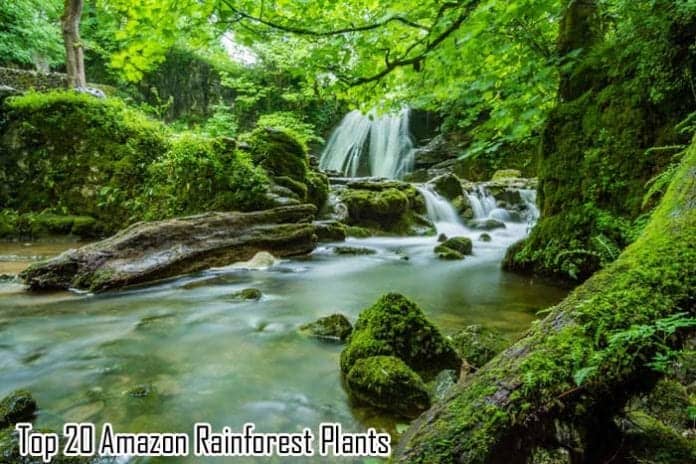
Amazon Rainforest Plants: The Amazon Rainforest is known for being the largest tropical rainforest in the world, covering much of Brazil, Peru, Colombia and other countries in South America.
Because of its strategic location, the Amazon Rainforest is naturally home to the world’s unique and most diverse plant and animal species.
Regarding plant life, the rainforest is oozing with biodiversity because more than 60,000 species of plants and trees can be found here.
Out of these thousands, we’ve listed below some of the most common yet most spectacular plant species that can be found in the region. Check them out.
Table of Contents
- Amazon Rainforest Plants
- 1. Heliconia (Heliconia latispatha)
- 2. Orchid (unranked)
- 3. Cacao (Theobroma cacao)
- 4. Passion Flower (Passiflora edulis)
- 5. Giant Water Lily (Victoria Amazonica)
- 6. Bromeliad (unranked)
- 7. Coffee Plant (Coffea arabica)
- 8. Rubber Tree (Hevea brasiliensis)
- 9. Banana (Musa sp.)
- 10. Poinsettia (Euphorbia pulcherrima)
- 11. Monkey Brush Vine (Combretum rotundifolium)
- 12. Sapodilla (Manilkara zapota)
- 13. Murumuru Palm Tree (Astrocaryum murumuru)
- 14. Açai Palm Tree (Euterpe oleracea)
- 15. Pitcher Plant (Nepenthes sp.)
- 16. Kapok (Ceiba pentandra)
- 17. Mahogany (Swietenia macrophylla)
- 18. Brazilian Nut Tree (Bertholletia excelsa)
Amazon Rainforest Plants
1. Heliconia (Heliconia latispatha)
| Kingdom | Order | Family | Genus | Species |
|---|---|---|---|---|
| Plantae | Zingiberales | Heliconiaceae | Heliconia | Heliconia latispatha |
![]()
Known as the Hanging Lobster Claw due to its shape, the Heliconia flower is one of the most common floras in the Amazon. It is primarily characterized by its brightly colored flowers that attract insects and birds.
- Hummingbirds rely on this plant for its food and nesting, and in return, they act as pollinators for this plant.
![]()
2. Orchid (unranked)
| Kingdom | Order | Family | Genus | Species |
|---|---|---|---|---|
| Plantae | Asparagales | Orchidaceae | unranked | unranked |
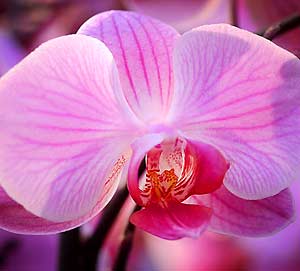
Considered the largest flower family in the whole Plant Kingdom, the Orchid family (Orchidaceae) comprises members adaptable to almost everywhere. Like any other flowers, they depend on other organisms for their pollination.
- Orchids found in the Amazon are known to be epiphytes. Meaning they have roots that tend to colonize the branches of their “host” plants, thus allowing them to have direct access to water.
![]()
3. Cacao (Theobroma cacao)
| Kingdom | Order | Family | Genus | Species |
|---|---|---|---|---|
| Plantae | Malvales | Malvaceae | Theobroma | Theobroma cacao |
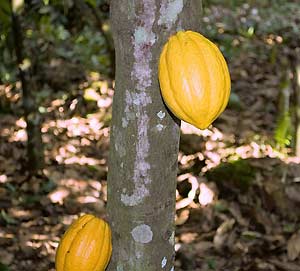
The Amazon rainforest is also the home to the plant where chocolate grows–Cacao! This plant, about 15 to 25 feet high, is an evergreen that grows pods with 30 to 60 cocoa beans. These pods are green in color when young and gradually turn reddish brown when it is ready to be harvested.
- Its genus name Theobroma means “food for the gods“, and everyone who loves to eat chocolate or any cocoa product knows why such a name is so fit for it.
![]()
4. Passion Flower (Passiflora edulis)
| Kingdom | Order | Family | Genus | Species |
|---|---|---|---|---|
| Plantae | Malpighiales | Passifloraceae | Passiflora | Passiflora edulis |
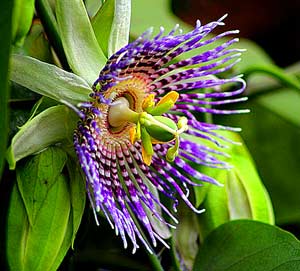
The next plant in this Amazon rainforest plants list is the beautiful Passion Flower. This vine is often seen hanging in the canopy of trees in the Amazon Rainforest. This unique flower is very distinct because of its white and purple flowers that have a seemingly plastic appearance and an intricate smell.
- Amazonian tribes use flower leaves as pain relievers and sedatives. In addition, the fruit itself, called the Passion fruit, is edible and used to treat a cough.
![]()
5. Giant Water Lily (Victoria Amazonica)
| Kingdom | Order | Family | Genus | Species |
|---|---|---|---|---|
| Plantae | Nymphaeales | Nymphaeaceae | Victoria | Victoria Amazonica |
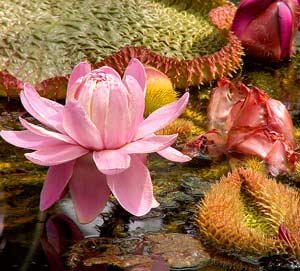
Growing in the waters of the Amazon river basin, the Giant Water Lily Victoria amazonica protects itself from predators by growing thorns in its leaves. As its name suggests, one of the most interesting facts about this lily is its vast leaf surface that can grow up to 46 centimeters in diameter.
- The leaves of this plant are so strong that they can support up to 136 kilograms and definitely can hold the weight of an average human being.
![]()
6. Bromeliad (unranked)
| Kingdom | Order | Family | Genus | Species |
|---|---|---|---|---|
| Plantae | Poales | Bromeliaceae | unranked | unranked |
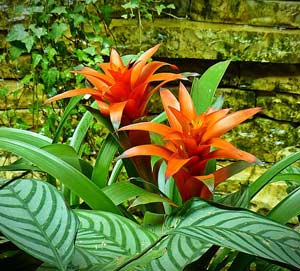
Bromeliads are tropical flowering plants that appear very bright in color. They usually range from color blue and purple to red and orange. And just like the Passion Flower, bromeliad flowers also produce fruits.
- Bromeliads have a remarkable way of storing water and food. They have adapted their leaves to curve and overlap at their bases to form a water tank. Large Bromeliads can hold up to 7.5 liters of water!
![]()
7. Coffee Plant (Coffea arabica)
| Kingdom | Order | Family | Genus | Species |
|---|---|---|---|---|
| Plantae | Gentianales | Rubiaceae | Coffea | Coffea arabica |
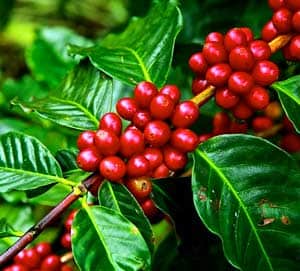
Coffee plants, which grow up to 30 feet high, are also widespread in the Amazon Rainforest. Inside its juicy berries are coffee beans that eventually make this plant one of the most important plants in the world.
- Typically, coffee plants grow under tree shades; hence, the Amazonian forest environment is perfect.
![]()
8. Rubber Tree (Hevea brasiliensis)
| Kingdom | Order | Family | Genus | Species |
|---|---|---|---|---|
| Plantae | Malpighiales | Euphorbiaceae | Hevea | Hevea brasiliensis |
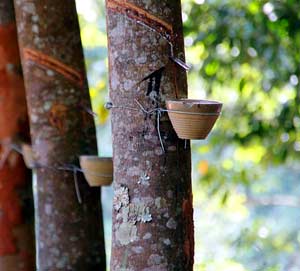
Economically speaking, the Rubber Tree is considered as one of the most valuable plants for Amazonian indigenous people. This is primarily because the said plant is the source of latex used in manufacturing rubber.
- Records show that this plant was endemic only to the Amazon rainforest but was smuggled to Southeast Asia and eventually propagated there.
![]()
9. Banana (Musa sp.)
| Kingdom | Order | Family | Genus | Species |
|---|---|---|---|---|
| Plantae | Zingiberales | Musaceae | Musa | Musa sp. |
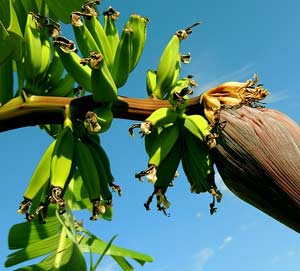
Also common in the Amazon Rainforests are bananas. Contrary to popular belief, bananas are not trees but are herbs. As such, their stems contain about 93% water.
- Bananas are considered one of the most widely known fruits and the fourth largest crop worldwide. This is because an average banana plant (weighing 100 pounds) can grow up to 150 pieces of banana fruits simultaneously!
![]()
10. Poinsettia (Euphorbia pulcherrima)
| Kingdom | Order | Family | Genus | Species |
|---|---|---|---|---|
| Plantae | Malpighiales | Euphorbiaceae | Euphorbia | Euphorbia pulcherrima |
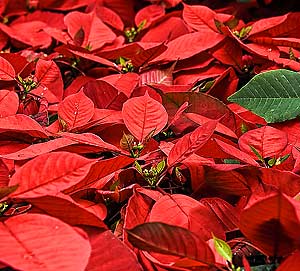
Found in the Amazon Rainforest, Poinsettiapetals” of the flowers are not the petals themselves but are the leaves. Their flowers are yellowish stalks that are surrounded by colorful leaves.
- The red leaves of the Poinsettia are called “bracts” that serve to attract pollinators.
- The Poinsettia blooms during December, hence often called the Christmas Flower.
![]()
11. Monkey Brush Vine (Combretum rotundifolium)
| Kingdom | Order | Family | Genus | Species |
|---|---|---|---|---|
| Plantae | Myrtales | Combretaceae | Combretum | Combretum rotundifolium |
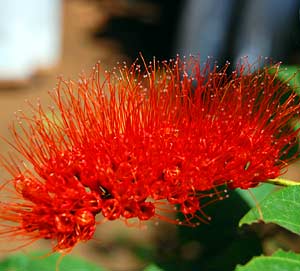
The interior part of the Amazon Rainforest contains the most exotic plants and animals in the world — the Monkey Brush vine is one of them.
- The Monkey Brush vine is a parasitic vine that thrives by entangling with other plants or trees. When it blossoms, it produces bright red and yellow interior flowers that slowly burst open, giving it the “monkey brush” look.
![]()
12. Sapodilla (Manilkara zapota)
| Kingdom | Order | Family | Genus | Species |
|---|---|---|---|---|
| Plantae | Ericales | Sapotaceae | Manilkara | Manilkara zapota |
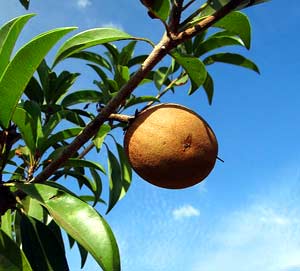
The Sapodilla is an evergreen that is found throughout the Amazon rainforest. This slow-growing plant is wind-resistant and has a complex root system that allows it to grow in the harsh environments of the forest.
- The Sapodilla has long been used by the Mayans and Aztecs to produce the first chewing gum. The sap (known as ‘chicle‘) is boiled, molded into blocks, and then cut into bite-sized pieces as chewing gums.
![]()
13. Murumuru Palm Tree (Astrocaryum murumuru)
| Kingdom | Order | Family | Genus | Species |
|---|---|---|---|---|
| Plantae | Arecales | Arecaceae | Astrocaryum | Astrocaryum murumuru |
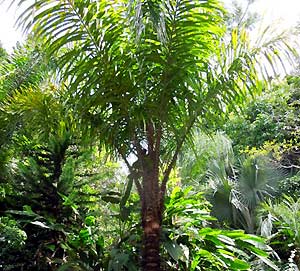
Endemic to the Amazon Rainforest, the Murumuru is a palm tree characterized by having a thick shuttlecock-like crown. Its fruits are edible and serve as a staple food for indigenous people.
- The Murumuru palm tree is the source of the “Murumuru butter ” that is known to be rich in numerous vitamins and Omega fatty acids that are the answer to damaged skin and hair.
![]()
14. Açai Palm Tree (Euterpe oleracea)
| Kingdom | Order | Family | Genus | Species |
|---|---|---|---|---|
| Plantae | Arecales | Arecaceae | Euterpe | Euterpe oleracea |
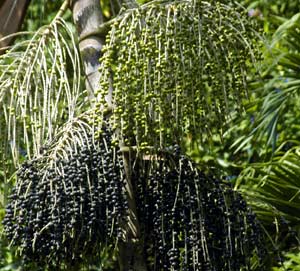
Scientists believe the Açai Palm tree to be the most abundant in the Amazon Rainforest. This tree has a spectacular green feather-like crown made of palm leaves. Every year, each stem of this tree produces 4 to eight bunches of berries, with each bunch weighing up to 6 kilograms!
- The Açai berry produced by this plant is often regarded as the “super fruit” because of its very high nutrient contents.
![]()
15. Pitcher Plant (Nepenthes sp.)
| Kingdom | Order | Family | Genus | Species |
|---|---|---|---|---|
| Plantae | Caryophyllales | Nepenthaceae | Nepenthes | Nepenthes sp. |
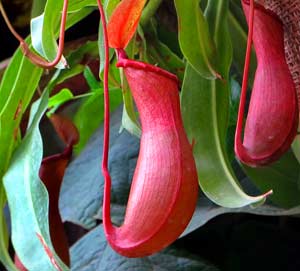
As its name implies, the Pitcher plant is a type of carnivorous plant that attracts its insect prey into its pitcher-like foliage. Inside is a sweet and sugary liquid (similar to nectar) whose smell attracts the potential victim. Once inside, the prey can no longer escape and will eventually be digested by the plant.
![]()
16. Kapok (Ceiba pentandra)
| Kingdom | Order | Family | Genus | Species |
|---|---|---|---|---|
| Plantae | Malvales | Malvaceae | Ceiba | Ceiba pentandra |
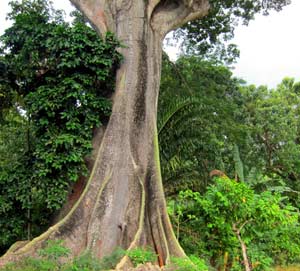
The Kapok tree is considered as one of the giants in the Amazon Rainforest as it can grow up to 200 feet high (some Kapok trees can even grow at a rate of 13 feet every year). The tree is so huge that it can have a nine to 10 feet diameter.
- The Kapok tree is widely sought because of its economic significance. Its wood is ideal for carvings and canoes. Its seeds can also be used to produce essential oils. Its fibers are used for weaving.
![]()
17. Mahogany (Swietenia macrophylla)
| Kingdom | Order | Family | Genus | Species |
|---|---|---|---|---|
| Plantae | Sapindales | Meliaceae | Swietenia | Swietenia macrophylla |
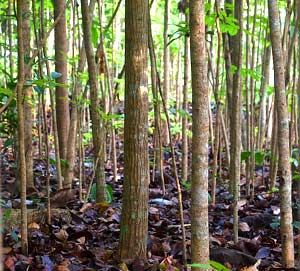
Also considered as one of the giants of the Amazon Rainforest, the Mahogany tree stands tall with a height of up to 200 feet. This tree, which can live up to 350 years, has long been considered a valuable timber product.
- Its wood is characterized by a deep reddish brown color and is often used for different musical instruments and furniture.
![]()
18. Brazilian Nut Tree (Bertholletia excelsa)
| Kingdom | Order | Family | Genus | Species |
|---|---|---|---|---|
| Plantae | Ericales | Lecythidaceae | Bertholletia | Bertholletia excelsa |
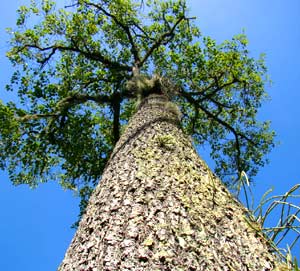
Reaching up to 160 feet high, the Brazilian Nut treegiants” of the Amazon Rainforest. This tree is very sensitive as it can only produce fruits in virgin forests.
- This tree is famous for its fruit, which has a tough outer covering. This covering is so hard that only the rodent called “Agouti” can crack it open. As a result, the tree depends on the rodent for its seed dispersal.
![]()
Do you know other Amazon rainforest plants that can be found in this region?
![]()


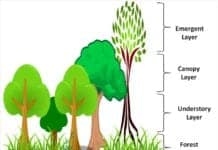

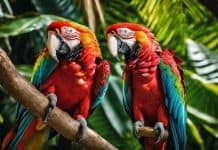
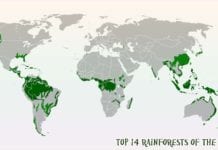

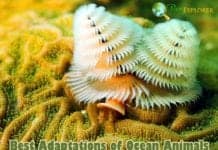















Thanks for knowing about giant trees because these play a vital and major role to protect our environment
This is very helpful thanks
[…] The reason the plant is called the Pitcher Plant is that the shape of the plant resembles a pitcher. Not only that but inside the pitcher is a liquid that is used to attract prey within the plant […]
these are some cool plants
The rattan palm and the rafflesia are not from the Amazon; they are from Southeast Asia.
Thanks for pointing out.
this was really helpful
i did not find what i was looking for
Hi Sally, What were you looking for that you didn’t find? Can you be more specific?